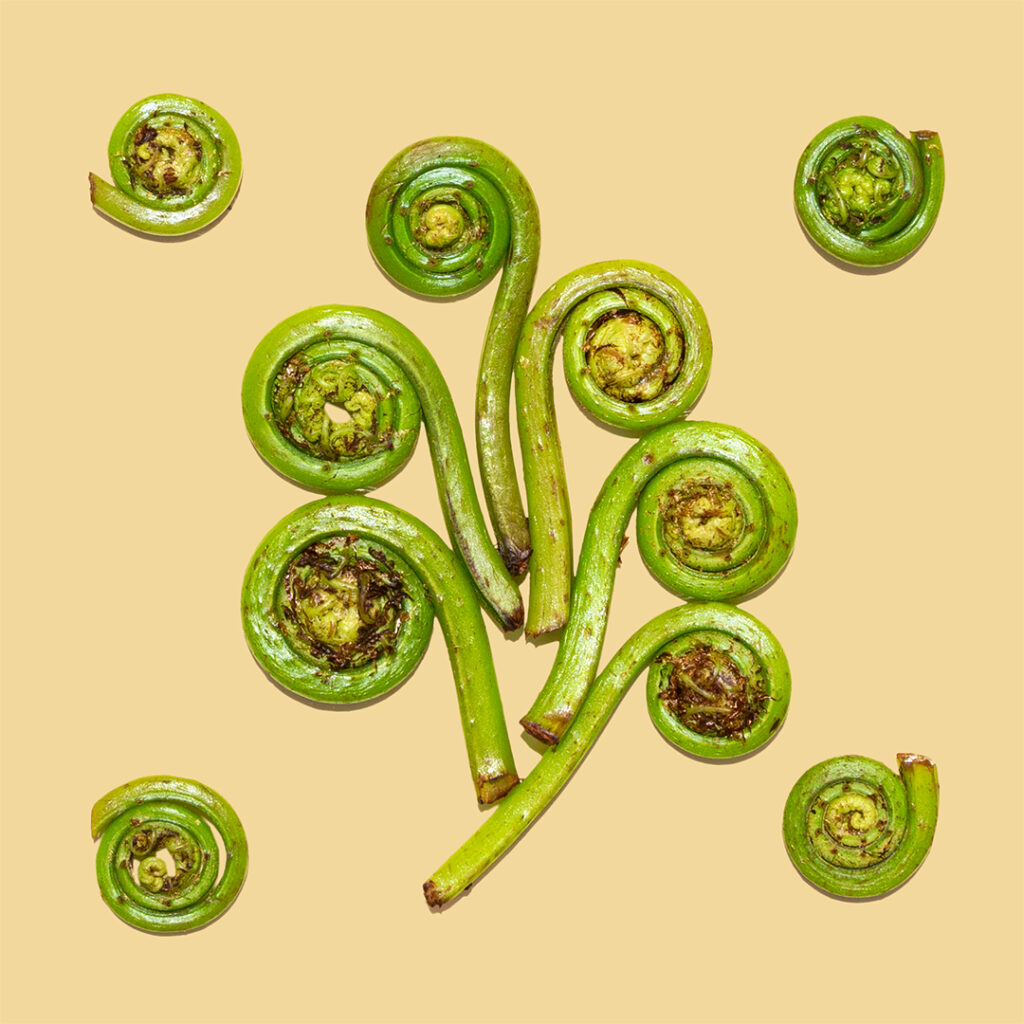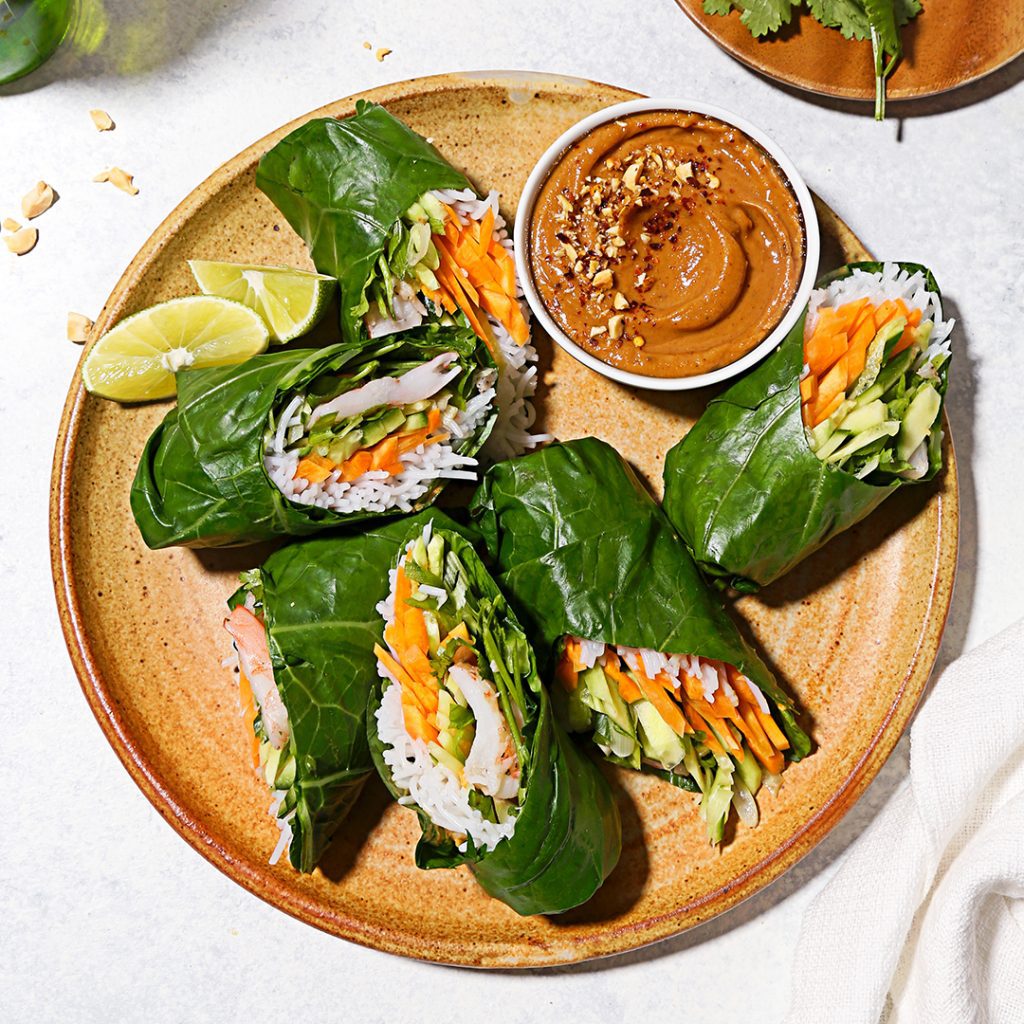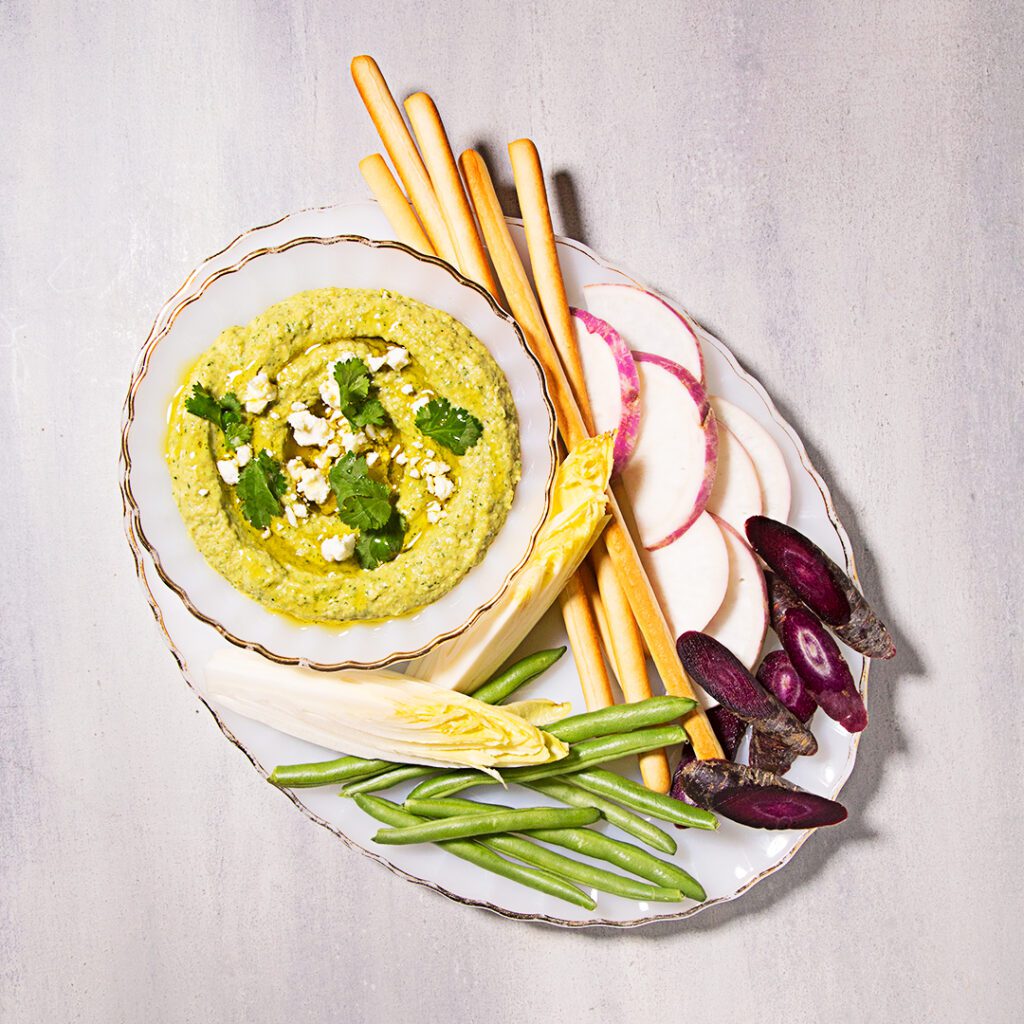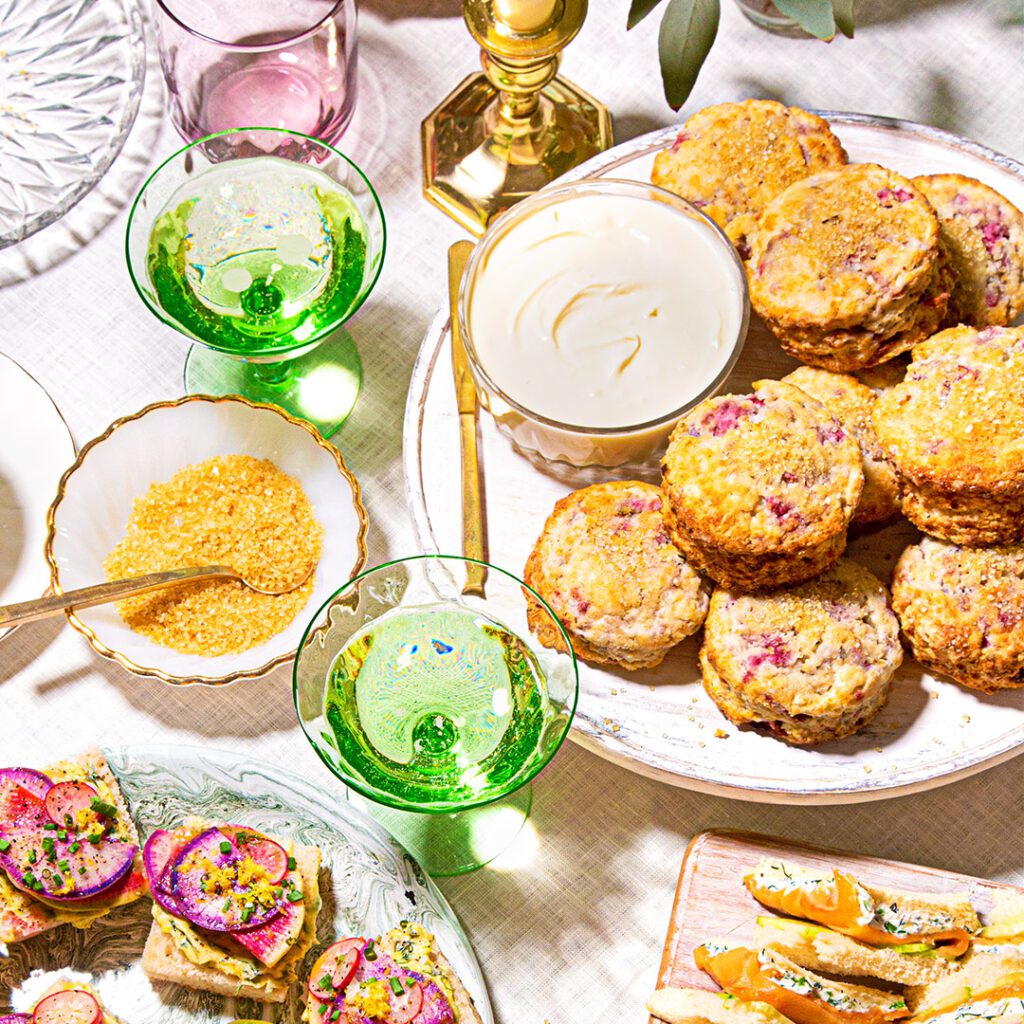
Fiddlehead ferns are one of spring’s most exciting (and fleeting!) ingredients. Their delicate, grassy flavor—somewhere between asparagus, green beans, and spinach—makes them a standout addition to your table. But because they’re foraged and highly seasonal, these edible ferns need a little extra care.

Here’s everything you need to know to get the most out of these unique greens—plus a few quick, go-to fiddlehead recipes to try.
What are fiddleheads?
If you’ve ever spotted a tightly coiled green sprout that looks like the top of a violin, you’ve seen a fiddlehead. So, what is a fiddlehead, exactly? It’s the young, curled frond of a fern—harvested before it unfurls into a full leaf. The most commonly eaten variety in North America is the ostrich fern, and it’s prized for its mild, nutty, and slightly grassy flavor.
When are fiddlehead ferns in season?
Fiddleheads are hyper-seasonal, typically available for just a few weeks in early to mid-spring, depending on the region. Because they’re wild-foraged, you’ll often see them pop up at farmers markets—or delivered directly to your door through online fiddlehead delivery, like at Misfits Market. So if you’ve ever wondered where to buy fiddleheads, don’t worry we have you covered!
What do fiddlehead ferns taste like?
Fiddleheads taste like a cross between asparagus, green beans, and spinach. They have a tender-crisp texture and absorb flavors beautifully, making them ideal for sautés, stir-fries, and salads.
Can you eat fiddleheads raw?
No—you should never eat fiddlehead ferns raw. The CDC recommends cooking them thoroughly to avoid any potential foodborne illness. That means blanching first, then fully cooking by sautéing, roasting, stir-frying, or grilling. Wondering how to prepare fiddlehead ferns properly? Keep reading.
How to prepare fiddlehead ferns:
- Rinse thoroughly in a bowl of cool water, swirling to remove dirt or grit.
- Trim the ends and remove any brown, papery husk.
- Blanch in salted boiling water for 2 minutes, then transfer to an ice bath.
- Cook fully before eating—never raw! (Sauté, grill, roast, or stir-fry for best results.)
Hungry? Try these easy fiddlehead recipes:
Simple Sautéed Fiddleheads
A classic and easy fiddlehead fern recipe to enjoy the pure flavor of spring.
Ingredients:
- 1 cup cleaned and blanched fiddlehead ferns
- 1 tablespoon olive oil or butter
- 2 cloves garlic, minced
- Salt and pepper to taste
- Squeeze of lemon
Instructions:
- Heat oil or butter in a skillet over medium heat.
- Add garlic and cook until fragrant (about 30 seconds).
- Add fiddleheads and sauté for 5–7 minutes until tender.
- Season with salt, pepper, and a squeeze of lemon. Serve warm.
Fiddlehead and Goat Cheese Salad
Bright, fresh, and perfect for spring gatherings.
Ingredients:
- 1 cup blanched fiddlehead ferns
- Organic spring mix
- Crumbled goat cheese
- Toasted walnuts or almonds
- Vinaigrette of choice
Instructions:
- Toss spring greens and fiddleheads in a large bowl.
- Top with goat cheese, nuts, and a drizzle of vinaigrette.
- Serve chilled or at room temperature.
Fiddlehead Stir-Fry
Fast, flavorful, and flexible with any other spring veggies you have on hand.
Ingredients:
- 1 cup blanched fiddlehead ferns
- 1 tablespoon sesame oil
- 1 tablespoon soy sauce or tamari
- 1 teaspoon grated ginger
- Optional: sliced bell peppers, carrots, or snow peas
Instructions:
- Heat sesame oil in a wok or large pan over medium-high heat.
- Add ginger and optional veggies; stir-fry for 2–3 minutes.
- Add fiddleheads and cook for another 3–4 minutes.
- Splash with soy sauce before serving.
Pickled Fiddlehead Ferns
Pickled fiddleheads are a great way to preserve their unique flavor for weeks to come.
Ingredients:
- 1 cup cleaned and blanched fiddlehead ferns
- 1 cup white vinegar
- 1 cup water
- 1 tablespoon kosher salt
- 1 tablespoon sugar
- 1 garlic clove, smashed
- 1 teaspoon mustard seeds
- 1 teaspoon peppercorns
- Optional: red pepper flakes for heat
Instructions:
- In a small saucepan, combine vinegar, water, salt, sugar, and spices. Bring to a boil, then remove from heat.
- Pack fiddleheads into a clean jar and pour the hot brine over them.
- Let cool, then refrigerate.
- Wait at least 24 hours before enjoying your fiddlehead pickles—best after 3 days!
Bonus fiddlehead fern tips:
- How to clean fiddleheads: Swish gently in cool water to remove all dirt and grit. Repeat if needed.
- How to freeze fiddlehead ferns: After blanching, spread on a baking sheet to freeze individually, then transfer to a freezer-safe bag. Great for future soups or sautés!
Celebrate spring with fiddleheads:
Fresh, bright, and surprisingly versatile, fiddleheads are a must-try for seasonal cooking. Snap them up while you can—fiddlehead season is short, and their flavor is unforgettable. Whether you’re craving sautéed greens or pickled fiddleheads, they’re sure to become a new favorite in your kitchen.



Want more springtime inspiration? Shop our seasonal produce, including fiddlehead delivery, at Misfits Market, and try these other springtime recipes:
